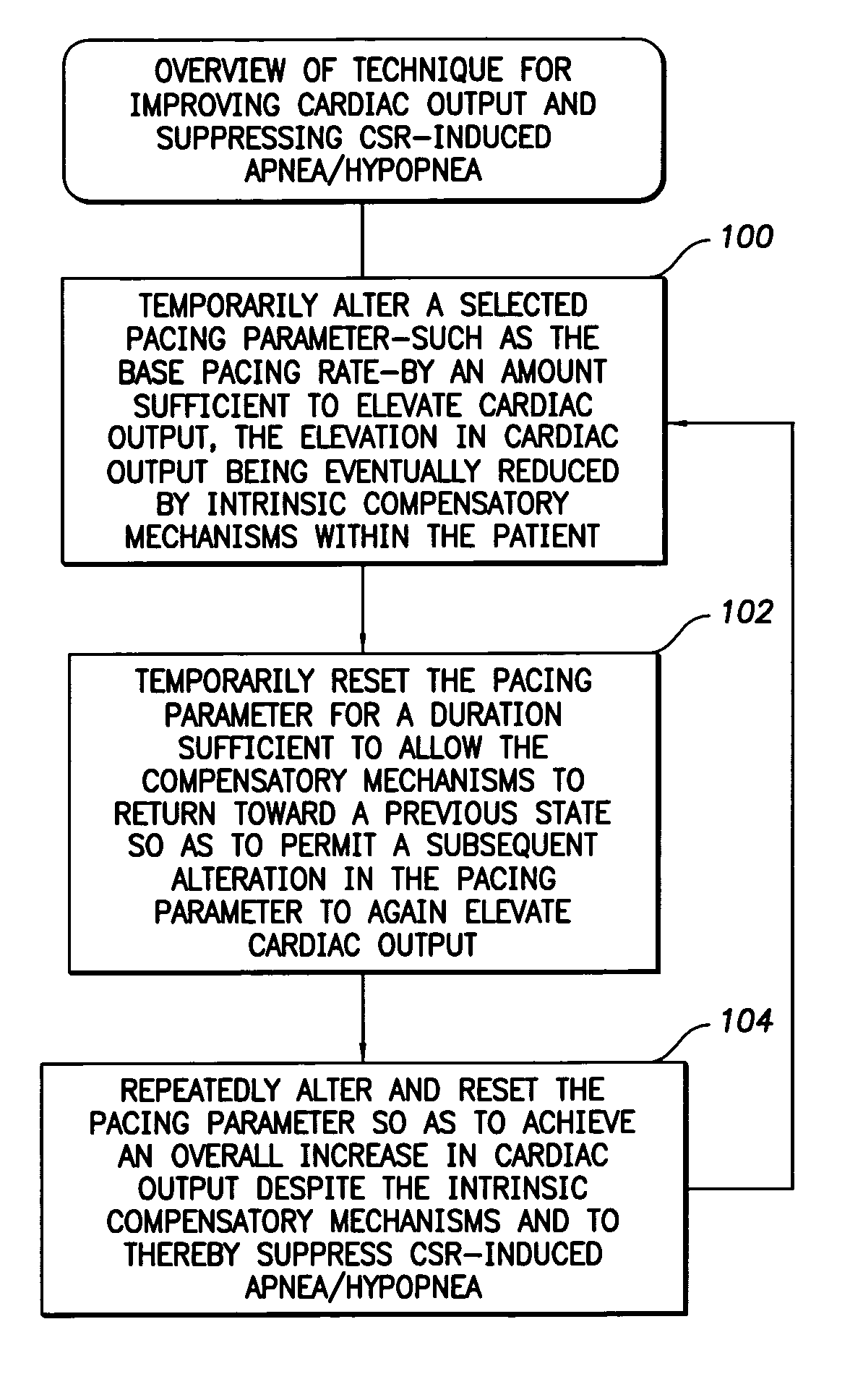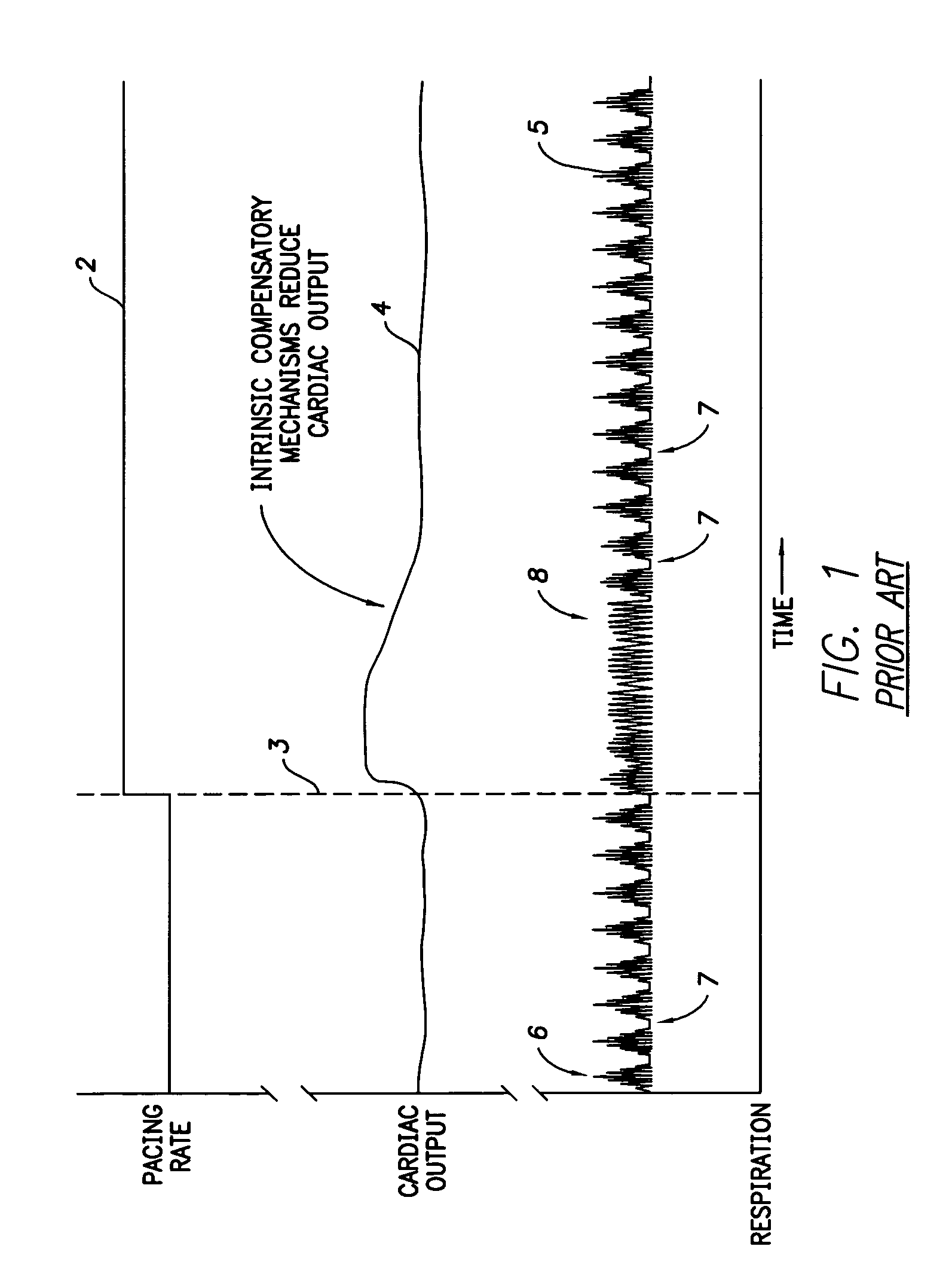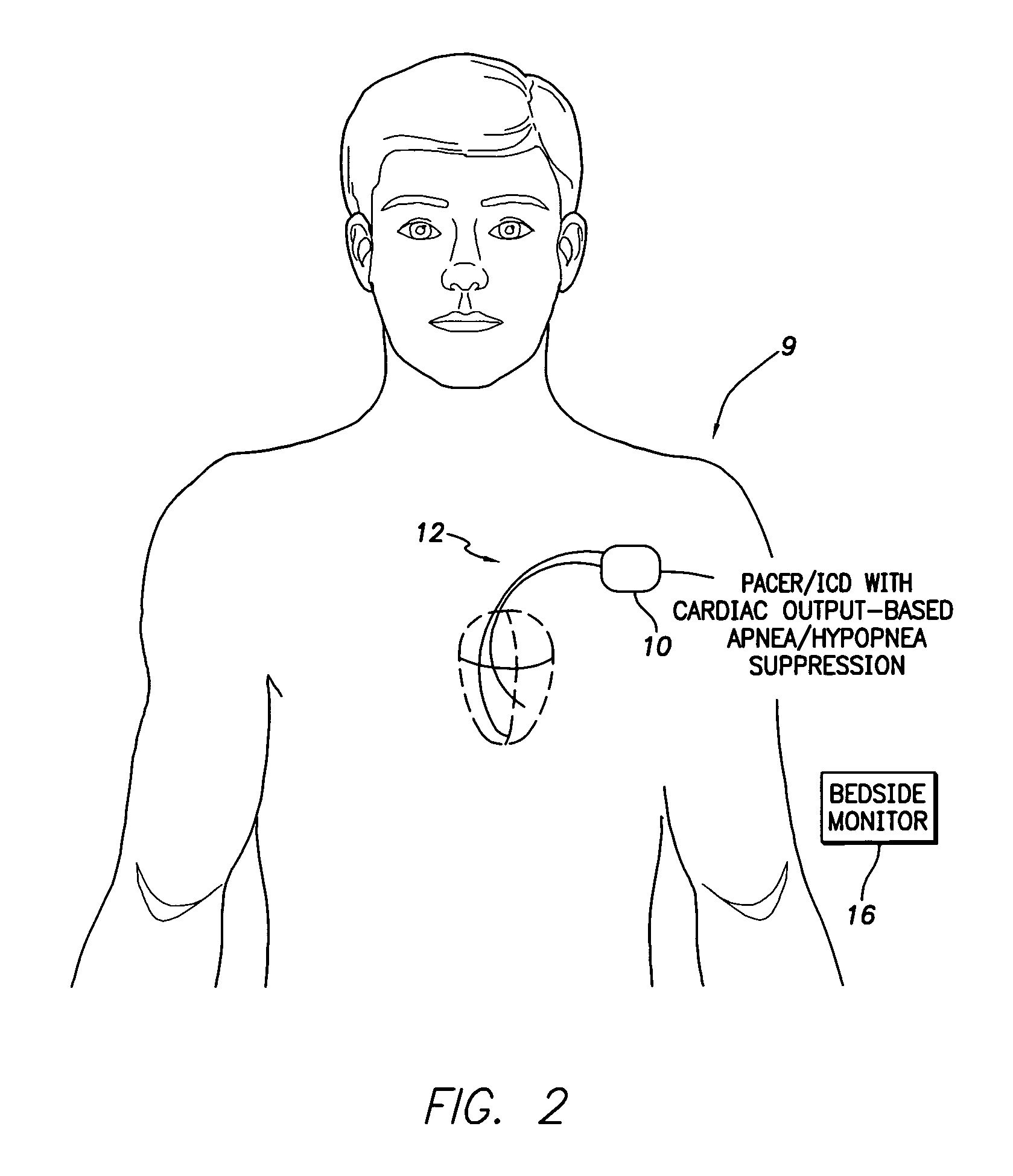Implantable medical device with cardiac output- based apnea suppression
a medical device and cardiac output technology, applied in the field of implantable medical devices, can solve the problems of poor cardiac function, poor blood flow to the brain, and excessive fatigue of patients with apnea, and achieve the effects of suppressing csr-induced apnea/hypopnea, reducing the elevation of the minimum respiration level, and suppressing csr-induced apnea/hypopnea
- Summary
- Abstract
- Description
- Claims
- Application Information
AI Technical Summary
Benefits of technology
Problems solved by technology
Method used
Image
Examples
Embodiment Construction
[0022]The following description includes the best mode presently contemplated for practicing the invention. This description is not to be taken in a limiting sense but is made merely to describe general principles of the invention. The scope of the invention should be ascertained with reference to the issued claims. In the description of the invention that follows, like numerals or reference designators are used to refer to like parts or elements throughout.
Overview of Implantable Medical System
[0023]FIG. 2 illustrates an implantable medical system 9 having a pacer / ICD 10 (or other cardiac stimulation device) equipped with a cardiac output-based apnea / hypopnea suppression system. Briefly, the pacer / ICD repeatedly alters and resets selected pacing parameters—such as pacing rate—so as to elevate cardiac output by an amount sufficient to suppress apnea / hypopnea, particularly apnea / hypopnea arising due to CSR. The elevated cardiac output is achieved despite intrinsic compensatory mechan...
PUM
 Login to View More
Login to View More Abstract
Description
Claims
Application Information
 Login to View More
Login to View More - R&D
- Intellectual Property
- Life Sciences
- Materials
- Tech Scout
- Unparalleled Data Quality
- Higher Quality Content
- 60% Fewer Hallucinations
Browse by: Latest US Patents, China's latest patents, Technical Efficacy Thesaurus, Application Domain, Technology Topic, Popular Technical Reports.
© 2025 PatSnap. All rights reserved.Legal|Privacy policy|Modern Slavery Act Transparency Statement|Sitemap|About US| Contact US: help@patsnap.com



